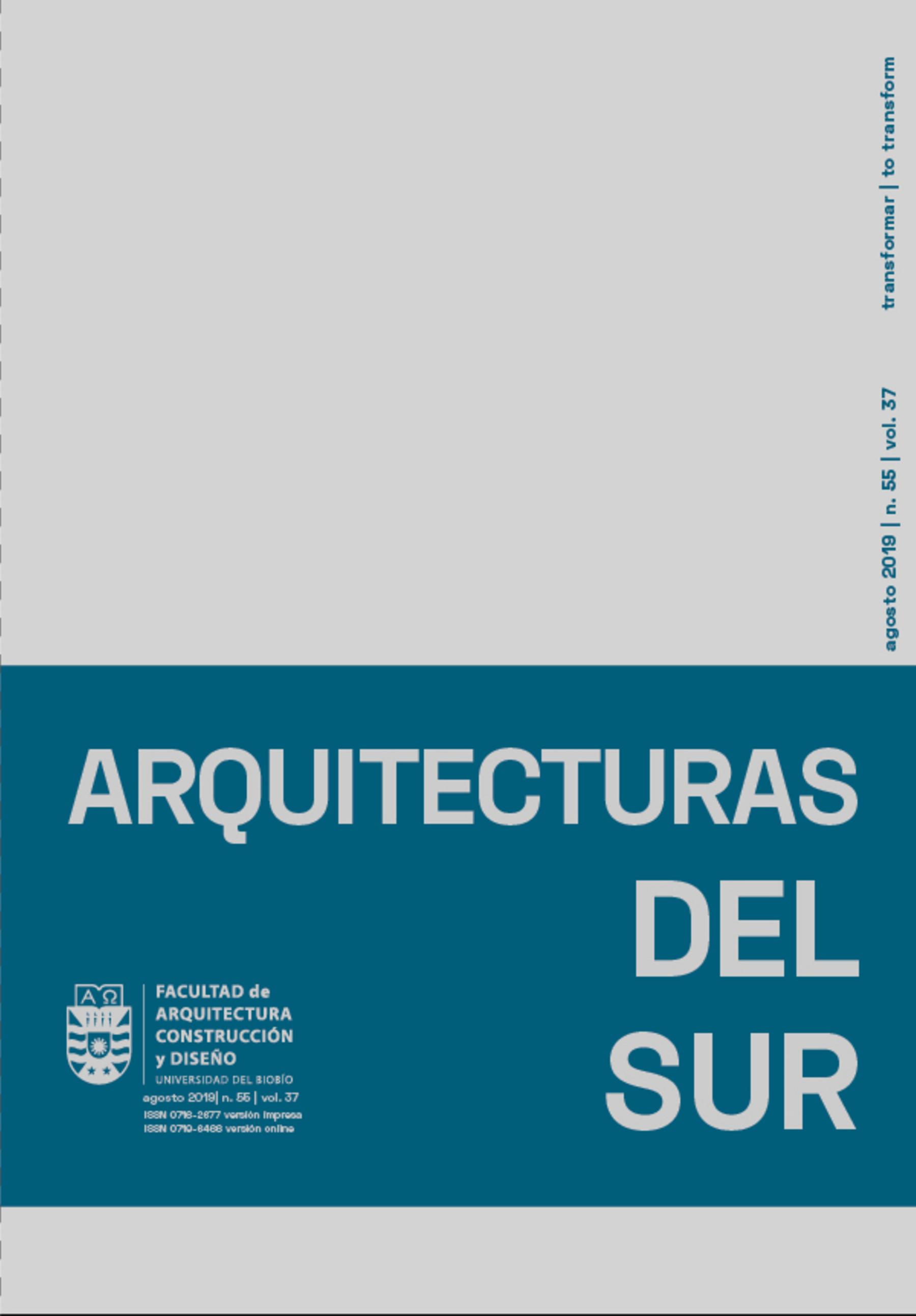The transformation of construction and architecture in the last twenty years: Prospects and perspectives. A bibliometric analysis of the most-addressed topics in international high-impact journals
DOI:
https://doi.org/10.22320/07196466.2019.37.055.07Keywords:
architecture, construction, bibliometrics, architectural pressAbstract
A statistical bibliometric study of the trends of the topics related to the design, diagnosis of buildings and construction developed over the last 19 years is carried out through the analysis of five cases of international journals specific to the area of high impact research. in architecture and construction. The total volume of papers involved in the topics of analysis reaches 24,230 units. With these historical data it is expected to determine current issues, of sustained relevance and to detect emerging topics of great transforming potential in the discipline. Development trends are observed in the emerging topics of interest and percentage growth among all the topics considered. The variation in the level of participation of some topics in architecture and construction over time is defined in the cases analyzed. The results indicate the stable topics and those emerging whose development and antiquity announces a forthcoming trend that will transform again the way of designing, communicating and constructing the architectural object.
Downloads
References
Campos S. (2019). Uso de Realidad Aumentada, Virtual y Computer Vision en Industria 4.0. Descripción de las tecnologías actuales implementadas por nuestra empresa en clientes como FCA Argentina, y ejemplos con clientes del exterior propios y de terceros. En Conferencia Virtuality San Juan: Realidad Virtual y Aumentada, San Juan, República Argentina.
Chastas, P.; Theodosiou, T. y Bikas, D. (2016). Embodied energy in residential buildings - towards the nearly zero energy building: A literature review. Building and Environment, 105, 267-282.
Clarivate Analytics (2019). Journal Citation Report. Recuperado de: https://clarivate.com/products/journal-citation-reports/
De Klerk, R.; Duarte, A. M.; Medeiros, D. P.; Duarte, J. P.; Jorge, J. y Lopes, D. S. (2019). Usability studies on building early stage architectural models in virtual reality. Automation in Construction, 103, 104-116.
Ding, G. K. C. (2014). Life cycle assessment (LCA) of sustainable building materials: an overview. En Eco-efficient Construction and Building Materials (pp. 38-62). Woodhead Publishing.
Dixit, M. K. (2017). Life cycle embodied energy analysis of residential buildings: A review of literature to investigate embodied energy parameters. Renewable and Sustainable Energy Reviews 79(Supplement C), 390-413.
EN 15459 (2007). Energy Performance of Buildings. Economic Evaluation Procedure for energy System in Buildings.
Ham, Y. y Golparvar-Fard, M. (2013). EPAR: Energy Performance Augmented Reality Models for Identification of Building Energy Performance Deviations between Actual Measurements and Simulation Results. Energy and Buildings, 63, 15-28. Recuperado de: http://dx.doi.org/10.1016/j.enbuild.2013.02.054
Ibn-Mohammed, T., Greenough, R., Taylor, S., Ozawa-Meida, L. and Acquaye, A. (2013). Operational vs. embodied emissions in buildings—A review of current trends. Energy and Buildings, 66, 232-245.
International Organization for Standardisation (2006). ISO 14044: Environmental Management -Life Cycle Assessment-Requirements and Guidelines, pp. 1-46.
Lee, C. y Lee, E. B. (2017). A prediction method of real discount rate to improve accuracy of life-cycle cost analysis of buildings. Energy and Buildings, 135, 225-232. Recuperado de: http://dx.doi.org/10.1016/j.enbuild.2016.11.020
Longo, S.; Montana F. y Sanseverino E., (2019). A review on optimization and cost-optimal methodologies in low-energy buildings design and environmental considerations. Sustainable Cities and Society, 45, 87-104. Recuperado de: https://doi.org/10.1016/j.scs.2018.11.027
Robati, M.; McCarthy, T. J. y Kokogiannakis, G. (2018). Integrated life cycle cost method for sustainable structural design by focusing on a benchmark office building in Australia. Energy and Buildings, 166, 525-537. Recuperado de: http://dx.doi: 10.1016/j.enbuild.2018.02.034
Paes, D.; Arantes, E. e Izarry, J. (2017). Immersive environment for improving the understanding of architectural 3D models: Comparing user spatial perception between immersive and traditional virtual reality systems. Automation in Construction, 84, 292-303.
Shin, S.; Jeong, S.; Lee, J.; Hong, S. W. y Jung, S. (2017). Pre-ocupancy evaluation based on user behavoir prediction in 3D virtual simulation. Automation in Construction, 74, 55-65.
Santos, R.; Costa, A. y Grilo, A. (2017). Bibliometric analysis and review of Building Information Modelling literature published between 2005 and 2015. Automation in Construction, 80, 118-136.
Sartal, A.; Llach, J.; Vázquez, X. y de Castro, R. (2017). How much does Lean Manufacturing need environmental and information technologies? Journal of Manufacturing Systems, 45, 260-272.
Science Direct (2019). Journals and Books. Recuperado de: https://www.sciencedirect.com/
Scimago Journal and Country Rank (2019). Journal Rankings. Recuperado de: https://www.scimagojr.com/journalrank.php
Downloads
Published
How to Cite
Issue
Section
License
The content of the articles published in each issue of Arquitecturas del Sur is the sole responsibility of the authors and does not necessarily represent the opinion of University of the Bío-Bío.
The authors will maintain their copyright; however, they will guarantee the journal the right to first publication and dissemination of their work. The publication of the article in Arquitecturas del Sur will be subject to the Creative Commons International license (CC BY-SA) that allows others to adapt: remix, transform and build on the material for any purpose, even commercially; share: copy and redistribute the material in any medium or format, as long as the authorship and first publication in this journal are acknowledged by citing them correctly, and their new contributions are under a license with the same terms.














 Programa de Información Científica/Concurso Fondos de Publicación de Revistas Científicas 2018/ Proyecto Mejoramiento de Visibilidad de Revistas UBB (Código:FP180007)
Programa de Información Científica/Concurso Fondos de Publicación de Revistas Científicas 2018/ Proyecto Mejoramiento de Visibilidad de Revistas UBB (Código:FP180007) 
